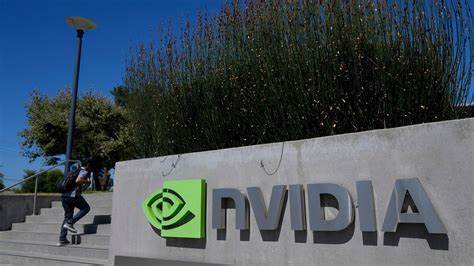NVIDIA - A Value Investor's Perspective On The FY 2025 Annual Report
NVIDIA's FY 2025 results showcase unprecedented growth fueled by the AI revolution, with revenue surging 114% and net income jumping 145%. However, this analysis highlights concerns about the stock's valuation, geopolitical risks, intensifying competition, and regulatory challenges.

Michael J. Harrington
Jan 25, 2025
Extraordinary Growth, But At What Price?
NVIDIA's FY 2025 annual report reveals a company experiencing unprecedented financial growth, driven primarily by the AI revolution. As a value investor, I find both compelling strengths and concerning risks that merit careful consideration.
Financial Performance: Explosive Growth
NVIDIA's financial performance is nothing short of extraordinary:
- Revenue surged 114% year-over-year to $130.5 billion
- Net income jumped 145% to $72.9 billion
- Gross margin expanded to 75.0% (from 72.7%)
- Operating income increased 147% to $81.5 billion
This growth is primarily driven by the Compute & Networking segment (+145% YoY), specifically data center computing (+162%) and networking (+51%), while the Graphics segment showed modest 6% growth.
Competitive Position: Strong Moat With Growing Threats
NVIDIA has built a formidable competitive moat through:
- Full-stack approach : Combining hardware, software, and systems (CUDA, Tensor Core GPUs, networking)
- Developer ecosystem : 5.9 million developers using CUDA and other NVIDIA tools
- First-mover advantage : Pioneered accelerated computing for AI applications
- Market share dominance : Powers 75% of supercomputers on the global TOP500 list
However, competition is intensifying. The report acknowledges threats from:
- Traditional semiconductor competitors (AMD, Intel, Huawei)
- Cloud service providers developing their own chips (Google, Amazon, Microsoft)
- Specialized AI chip startups and alternative architectures
Concerning Risks That Deserve Attention
Several risks stand out as particularly concerning:
- Export Controls: The report extensively details growing restrictions on NVIDIA's ability to sell advanced chips to China and other markets. The January 2025 "AI Diffusion" Interim Final Rule will impose worldwide licensing requirements on many NVIDIA products, potentially further restricting sales and creating significant business uncertainty.
- Customer Concentration: Three direct customers each represented over 10% of total revenue. This concentration creates vulnerability if any major customer shifts spending or develops internal alternatives.
- Supply Chain Vulnerabilities: NVIDIA is heavily dependent on TSMC and other Asian manufacturers, creating geopolitical risk, particularly regarding Taiwan.
- Inventory Management Challenges: The company recorded $3.7 billion in inventory provisions in FY 2025 (up from $2.2 billion), indicating potential challenges in forecasting demand.
- Regulatory Scrutiny: The report notes increased regulatory attention from competition authorities worldwide, including the European Union, United States, United Kingdom, South Korea, and China.
Valuation Concerns
The report states that NVIDIA's market value was approximately $2.7 trillion as of July 2024. With net income of $72.9 billion, this implies a P/E ratio of roughly 37x. While the growth rate is impressive, such a high valuation leaves little room for execution missteps or growth deceleration.
What's particularly concerning is the relationship between capital expenditures and revenue growth. For FY 2025, capex was only $3.4 billion despite generating $130.5 billion in revenue. This unusually high revenue-to-capex ratio raises questions about the sustainability of growth without more substantial infrastructure investment.
Potentially Misleading Elements
- China Revenue Impact: While the report acknowledges export controls to China, it downplays the potential long-term impact by noting that "our Data Center revenue in China grew in fiscal year 2025." However, it then admits this revenue "remains well below levels seen prior to the onset of export controls," without quantifying the difference.
- Stock-Based Compensation: The company recorded $4.7 billion in stock-based compensation (up from $3.5 billion), but this expense is often excluded from non-GAAP figures highlighted in earnings releases, potentially overstating profitability.
- Geopolitical Risks: While the report mentions Taiwan-related risks, it understates the potential catastrophic impact of any Taiwan conflict on NVIDIA's business, given its manufacturing dependencies.
Hidden Insights And Opportunities
- Software Revenue Potential: The report mentions "NVIDIA AI Enterprise" software and "DGX Cloud" services but provides little detail on their contribution to revenue or margins. This growing high-margin business could become increasingly material.
- Non-Marketable Equity Securities: NVIDIA has dramatically increased its investmentsin private companies, with the value of non-marketable equity securities growing to $3.4 billion (from $1.3 billion). One private investment saw an unrealized gain of $565 million in Q4 alone. These strategic investments could provide future growth vectors.
- RTX as an AI PC Platform: The report notes that RTX GPUs have an "installed base of over 100 million AI capable PCs" with "more than 700 RTX AI-enabled applications and games." This positions NVIDIA well for the emerging AI PC market beyond data centers.
- Automotive Growth Potential: Automotive revenue grew 55% year-over-year but still represents only 1.3% of total revenue. This segment could become a significant growth driver as autonomous vehicle adoption increases.
Investment Conclusion
NVIDIA has executed brilliantly during the AI boom, capturing extraordinary value and building a seemingly insurmountable lead in accelerated computing. The company's financial performance is remarkable, with industry-leading margins and returns on invested capital.
However, as a value investor, I find the current valuation difficult to justify despite the stellar growth. The combination of increasing regulatory headwinds, geopolitical risks, intensifying competition, and customer concentration creates a risk profile that isn't adequately discounted in the stock price.
For existing shareholders, I would consider trimming positions to lock in some gains while maintaining exposure to future growth. For those without a position, patience may be rewarded with more attractive entry points if growth moderates or macro conditions deteriorate.
NVIDIA remains an exceptional company, but at the current valuation, much of its bright future is already priced in, leaving an insufficient margin of safety for value-oriented investors.